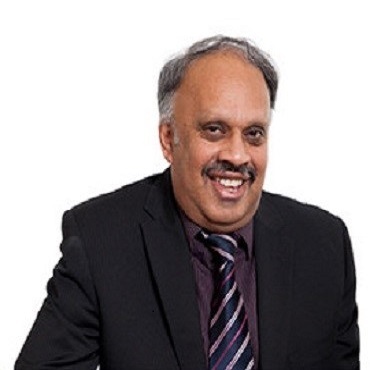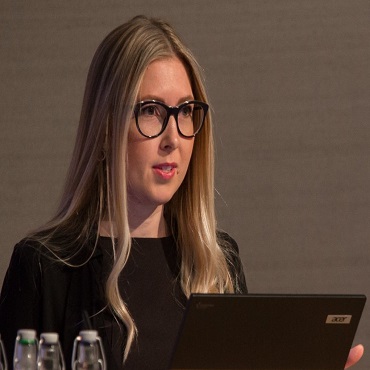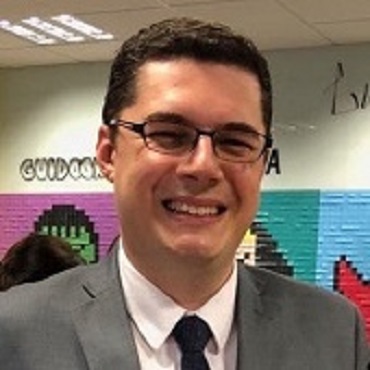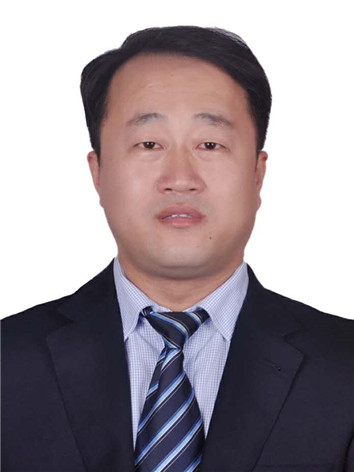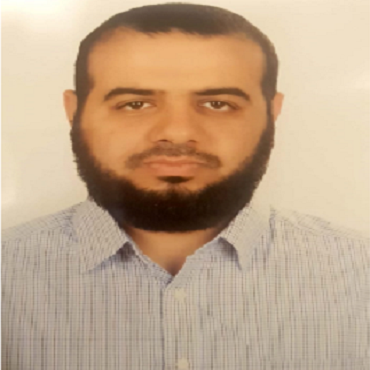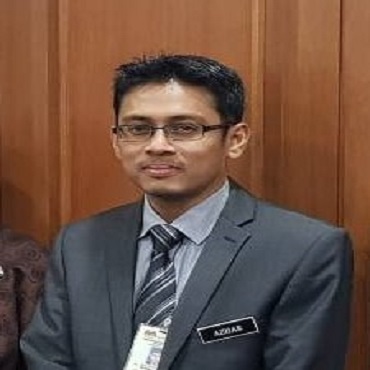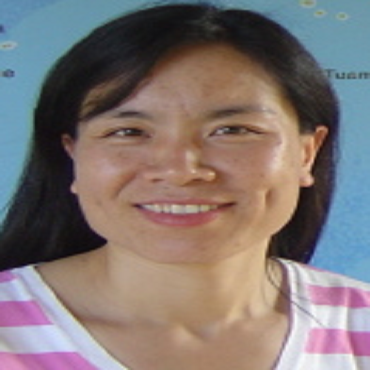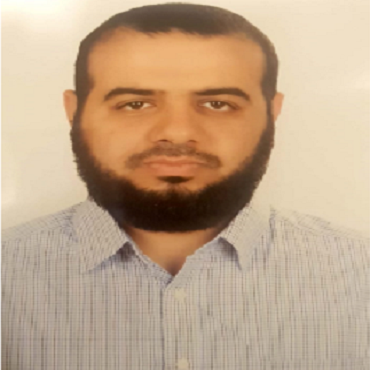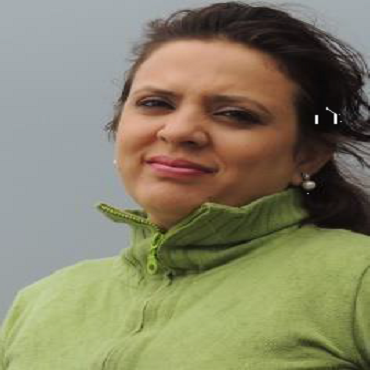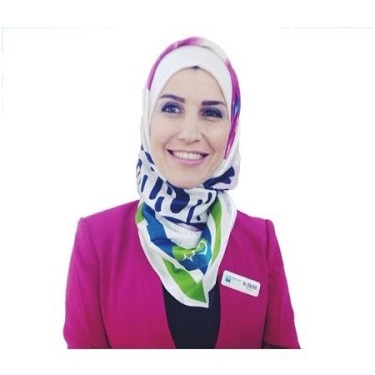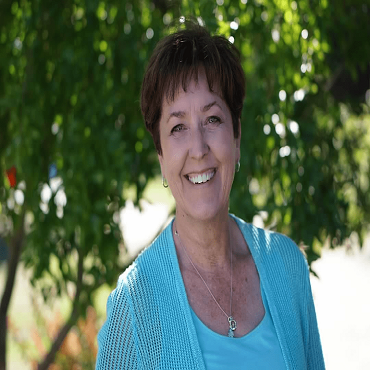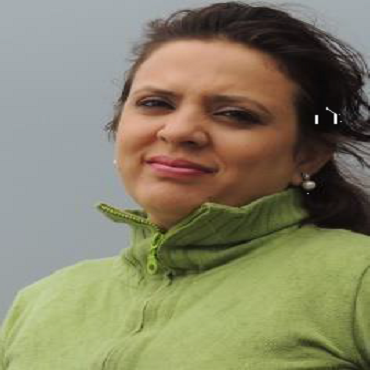Scientific Program
Keynote Session:
Title: Patient Safety in Nephrology
Biography:
Umesh Prabhu is passionate of patient safety, professional regulation, why doctors make mistakes, organisational culture and leadership and also impact of subconscious bias and Institutional racism on patient safety and staff well-being.
Abstract:
Health is the wealth of the nation. To create a thriving economy every nation needs healthy people to work with skills and jobs. It is the duty of each and every nation to create an excellent healthcare which is safest and the best and is affordable.
NHS is a great Institution and each year 360 million patients are seen by 1.3 Million staff. Most staff work hard and most patients receive safest and the best care. However, sadly culture of bullying is common in NHS. Staff survey shows that 20 to 30% of staff report being bullied or seen someone being bullied in the NHS. Bullying culture is common not only in NHS but throughout the World in healthcare sector. There is complex reasons for the culture of bullying.
When I was the Medical Director of Wrightington, Wigan and Leigh FT (2010-2016) I had to deal with culture of bullying and we transformed the culture of bullying to kind caring compassionate learning and supportive culture. We reduced harm to patients by 90% over 8 years . We empowered staff to speak up and 70 staff raised concerns with me and other Directors and this helped us to transform the culture. The Trust appointed kind caring compassionate leaders to each and every department, created good team working, implemented good governance and duty of candour. Trust received 45 awards and 450 more patients survive each year and for staff happiness Trust improved from bottom 20% in 2011 to third best by 2016. In my presentation I will be presenting as to how we transformed the culture and I will be focusing on some of the nephrology cases like Diabetes, renal surgery and acute kidney injury and how we reduced harm and how we learnt lessons. Leadership is honesty, sincerity, integrity and courage to protect patients and to support staff. Happy staff – Happy patients is the culture we created to transform the Trust.
Title: ZERO preventable deaths: The only acceptable goal
Biography:
Ariana Longley, in her short career prior to joining the patient safety movement foundation, Ariana graduated cum laude from Loyola Marymount University with a bachelor of science in biology with a minor in studio arts. She worked at the university of california, Irvine’s institute for immunology for one year and left her post at UCI to pursue a master of public health degree from the University of Edinburgh, Scotland in 2012, with a focus on oral immunotherapy for children with egg allergy. Ariana came back to california and spent time at the orange county healthcare agency in the health promotion division. She then seized the opportunity to work at masimo corporation. Ariana volunteered at the patient safety movement foundation’s 2015 patient safety, science & technology summit and knew that she wanted to step into a leadership role to support the foundation’s audacious mission. Ariana has been with the patient safety movement foundation since 2015 and is currently serving as chief operating officer.
Abstract:
Setting a goal of zero preventable patient deaths in your hospital may seem daunting, or impossible. This talk will share the work of the patient safety movement foundation, a global non-profit working in over 50 countries to eliminate preventable patient deaths in hospitals. Medical errors are the third leading cause of death in the United States, and the latest research suggests it is the 14th leading cause of death globally, killing more people than HIV, Tuberculosis and Malaria, combined. This presentation will show how this global Movement has grown since it’s inception in 2012 and will encourage attendees to take action, committing to zero.
Title: Artificial intelligence in Healthcare Management: An executive crash course in 30 minutes
Biography:
Marcelo Tournier is a tech-seasoned physician, product manager and self-taught R+Python developer with 10+ years building technologies (apps, IoT, Artificial Intelligence). Championed global strategy design for healthcare industry with data-driven projects. Now, is leading inova life, an innovative startup with the purpose of teaching data science to healthcare professionals. Marcelo has a medical degree and a master’s in healthcare technology innovation. Now, he is pursuing another masters degree in business analytics at Hult International Business School, in San Francisco, California.
Abstract:
The rising costs in healthcare are a deep concern worldwide. AON estimated that the healthcare inflation for 2019 will be around 7.8% (a figure almost three times higher than the global inflation predicted by the International Monetary Fund). This imposes to decision makers in healthcare management an increasingly bigger challenge to offer the best quality of care, optimizing costs and managing a complex environment. To be able to drive change in this situation, more accurate data is needed on a timely manner for healthcare leaders. On the other hand, all the innovations brought by information technology are increasing the collection of data from patients in a huge amount. Although, this huge data ocean is almost impossible to be analyzed using the same, traditional methods. This is where Artificial Intelligence (AI) arises as a way of helping leaders to identify opportunities to offer more value to patients. Yet, many health professionals still see AI as a “Black Box”, fearing that computers would take their roles in the near future.
The purpose of this lecture is to give an understandable overview about the actual state of AI in healthcare management, highlighting its importance, shedding some light on the main algorithms (regression, classification, reinforcement), followed by an explanation about its frameworks. Finally, the Cross-Industry Standard Process for Data Mining (CRISP-DM) will be explained, as a practical method to apply AI in healthcare management
practice.
Title: Healthcare facilities closing their doors or filing bankruptcy: Solutions and support are available ASK
Biography:
Abstract:
Title: Unplanned return to operating room, What can we do
Biography:
Abstract:
Objective The aim of this study was to analyze the reasons of unplanned return to operating room and to help improve hospital management to reach a better neurosurgical service. Methods Medical records of unplanned return to the operating room (URTOR) within 30 days of initial surgery were reviewed at a single neurosurgical center for a period of three years. 62 URTOR cases out of 4516 neurosurgeries were included to analyze patients’ age, sex, initial surgery code, seniority of the performed surgeon, interval between the reopening procedures and initial procedures, time and type of initial surgery, reason for reopening, prognosis and complications. Results The 62 patients underwent 70 URTORs. Out of 1445 primary operations performed by junior surgeons, 40 experienced URTOR, while 22 of 3071 craniotomies initially performed by senior surgeons resulted in URTOR. Five patients died in this series. Out of the 54 patients who experienced one-time URTOR, 3 died, whereas 2 of the 8 patients who experienced two-time URTOR died. Of 22 URTOR surgeries performed by senior surgeons, 10 took place within 24 hours, compared to 26 out of 48 performed by the junior surgeon. Of 62 initial procedures, 38 took place in daytime, the rest performed in nighttime, and 44 procedures were emergency surgeries. Conclusion The main reasons for URTOR after neurosurgery are rebleeding and swelling of the brain. Junior surgeon has higher rate of URTOR. From hospital management’s point of view, senior surgeon supervising emergency surgery performed by junior surgeon is crucial to reduce the rate of reopening operation, especially for nighttime surgery.
Title: The Hospital & the elephant: A pre-commissioning story
Biography:
George Schutte, South African by nationality, has 25+ years’ experience in the private hospital space. He started his career in South Africa in the Banking Industry. George then joined Mediclinic Southern Africa as a Hospital Director for 18 years. Thereafter he served as a consultant for greenfield hospital projects in South Africa and Namibia.This experience equipped him to relocate to the UAE, where he served as CEO of various hospitals for a few of years, before joining VAMED as a project leader for the Pre-Commissioning Hospital Operational phase of VAMED’s projects in the Middle East; and more recently also in Thailand, Nepal & China. Currently George resides in Haikou, China.
Abstract:
A new Hospital project is always a very challenging journey (to say the least)! Experience has shown that one such critical element for the success of a new Hospital project is the Pre-Commissioning period; and more specifically planning for this phase. Often the Construction Pre-Commissioning planning is dealt with sufficiently. However, Planning for the operational Pre-Commissioning activities is often underestimated and therefor neglected.
The result being: always a frustrated team, usually unnecessary delay in the opening, and, most often, over budget. One criterion for a project to be regarded as successful is the 1,000+ operational actions & activities which need to be sufficiently attended to by the Operational Team. An example of these activities ranges from documentation and staffing to implementing of committees and governance. “Comprehensive” and “organized” are two key characteristics of these activities. The adventure starts from the original vision of the owner and continuous up until the date-of-first-patient. Not only must we attend to these activities but we must also address them in a synchronized manner, with specific time periods allocated to them. The responsibility to manage this process lies not with the construction project team, but with the operational team. We often feel that this task is boring and tedious. Though, it can be stimulating and fulfilling, íf we keep it simple; use suitable tools; communicate well; involve the whole team; apply sufficient knowledge; (and have FUN).
Title: Burnout syndrome among physicans working in King Fahad Hospital of the Unversity, al-Khobar
Biography:
Abdullah Al Ruqaib serves as Senior Registrar of Family Medicine at family and community medicine center in al Imam Abdurrahman bin Faisal university, Dammam, Saudi Arabia . He held various leadership roles at family and community medicine center. He is trainer of Saudi board program and member of exam committee for Saudi board at family and community medicine center. His interests focuses on safety in health serves centers . he serve as chairman of safety committee, member of strategy planning committee and performance improvement committee at family and community medicine center in al Imam Abdurrahman bin Faisal university.
Abstract:
Background: Burnout syndrome is an occupational mental health problem that affects human service professionals, including physicians, due to chronic job stress. It is a syndrome of three dimensions: Emotional Exhaustion (EE), Depersonalization (DP), and reduced Personal Accomplishment (PA), that can occur among individuals who work with people. Physicians are placed under stresses as they are required to provide quality services despite the weakness of infrastructure, shortage of staff, and increased number of patients. In addition, physicians are required to continuously update their knowledge, improve their skills and at the same time take care of themselves and their families. All these stresses may eventually lead physicians to “burnout”. Despite the importance of this occupational mental health problem, there is a dearth of literature about job burnout among physicians in Saudi Arabia.
Objectives: This study was conducted to estimate the prevalence of burnout among physicians working in KFHU and to determine the factors associated with burnout among physicians working in KFHU at eastern province of Saudi Arabia.
Methodology: This was a cross-sectional survey targeting all eligible physicians working in KFHU. A total of 390 physicians were targeted and contacted. A self-administered questionnaire consisting of two sections was used. The first section was constructed by the researcher to include background information on determinant of burnout. The second section was the Maslach Burnout Inventory-Human Services Survey. The prevalence of burnout levels and each dimension were calculated. The SPSS program was used for data entry and analysis.
Results: A total of 265 instruments were analyzed .The response rate for this survey was 67.9%. The prevalence of the different dimensions of burnout are the following: 111 (41.9%) experienced average to high emotional exhaustion, 72 (27.2%) experienced high depersonalization and 102 (38.5%) experienced low personal accomplishment. Of all respondents, 28 (10.6%) had burnout as identified by the combination of high EE, high DP and low PA.
Title: Cohesiveness and commitment of employees In a malaysian cluster-based hospital
Biography:
Azhar Merican had led three hospitals, in which one of it was a pilot merger of hospitals undertaken by the Ministry of Health Malaysia in 2014. The objectives of this initiative was to improve the performance of smaller non-specialist hospitals, improve clinical service delivery, bridging clinical expertise, sharing of assets and technology as well as evaluating its cost effectiveness by using a centralized budget (Ministry of Health Malaysia, 2015). Since the outcome of the pilot was favourable, the ministry has rolled out clustering other public hospitals throughout the country in 2017/2018.
Abstract:
Statement of the Problem: Hospital merger or clustering has documented an increasing trend globally in the last two decades. However, 7 out of 10 mergers have failed quoting employee as the main cause for hospital merger failures. This study examines two employee factors which is cohesiveness and commitment levels between the lead hospital and the acquired hospitals, as well as across different categories of staff, against the performance and outcomes of the cluster objectives.
Methodology & Theoretical Orientation: The group environment questionnaire for cohesiveness and the meyer and allen’s model for commitment were incorporated as questionnaires onto 149 randomly selected respondents. The ‘Synergy Theory’ stresses organizations to have coordination internally, collaboration and cohesion to enhance operational efficiency while the ‘Disciplinary Merger Theory’ suggests that the acquirer is not focused on profitability but is committed to improve the acquired firm’s performance. The independent-samples t-test and one-way analysis of variance were used to test the hypothesized statements.
Findings: Cohesiveness exists at the same levels across all categories of staff (p = 0.161) and between both lead and acquired hospitals (p = 0.875). As for commitment, lead hospital had a slightly higher mean score (M = 10.26, SD = 2.152) indicating commitment in improving the performance of acquired hospitals whereby bed occupancy rates increased 10% after the first year of implementation. Whereas the commitment across different staff categories is statistically significant (p = 0.004) with the middle managers having the highest mean score (11.41). The longer tenure of these ward managers and head of units made them more specialised and focused on their tasks in coordinating clinical services.
Conclusion & Significance: Cluster initiative may be a success, provided cohesiveness and commitment amongst staff are present to ensure sustainability. Smaller, non-performing hospitals can be optimized with the support of larger hospitals with specialists.
Title: What is the ROI on leadership?
Biography:
Constance Musallam have a passion for the amazing effects that great leadership can have on and within an organization. As a result, she focus on the top leadership and the middle manager as they both carry a huge impact on those they lead. She focus is to keep the organization financially sound, resilient in health and passionate in leadership.
Abstract:
Leadership is a topic that has been talked about now for at least the last 40 years. We know that it is leadership that drives an organization, however, it’s more than just leading your team it’s the style of your leadership that determines whether you will be graced with success. There are many factors that exist behind the success of any organization that is way beyond the services and products that you may be so proud of. I have found that the greatest common challenge identified in organizations is the challenge of morale. In our healthcare world this is known as ‘employee engagement’ which affects endless facets of your organization such as - quality, productivity, creativity, team collaboration, business outcomes and most importantly asking whether your employees really care about the work they do?
I love Forbes definition of ‘Employee Engagement’ as, “having an emotional commitment to the organization and its goals. This emotional commitment means engaged employees actually care about their work and their company”. When this is in place, you will have success. Engaging with your employees is one of the most significant and foundational skill for all leaders. Jo Tye, from nightengale’s prescription describes this as your ‘Invisible Architecture™’. It’s a must have!
What would it look like to have emotionally positive environment, to have self-empowered employees and to possess the dynamics that promote a complete and full engagement from every corner of the organization? From there we will explore the magic that comes from quint studer from ‘Hardwiring Excellence’. It’s as simple as connecting with your employees on a daily basis. Learn to see how every employee brings value to the work they do and how it results in an organization that thrives and exudes success.
So, what does a successful organization look like and how does it actually happen? It really is simple. Are you ready?
Title: What are the barriers in achieving a shared understanding of the patient safety concept between organisational hierarchy and frontline staff-How important is establishing this symbiotic relationship to Patient Safety?
Biography:
Abstract:
Title: A regional level survey on acceptance test assessment in radio diagnostic instruments
Biography:
C. Senthamil Selvan obtained his M.Sc. in Medical Physics, M.B.A. in Hospital Management and pursuing his Ph.D. in Medical Physics (dissertation submitted) from Bharathiar University. He has been serving as a peer reviewer of APES and IJRR journal. He has received numerous honors and awards such as ICTP visiting fellow, Italy in 2018, Swami Vivekananda Youth Achievement Award in 2018, Researcher and Educational Services Award in 2018, National Best Teacher Award, India in 2017, and Junior Research Fellow of DST-SERB research project in 2013. His research has been focused on medical imaging and radiation safety in diagnostic and therapeutic.
Abstract:
The present study emphasizes the current status of quality assurance (QA) assessment on various radio-diagnostic instruments in and around southern parts of India. A pilot survey was conducted at the 230 instruments from 151 hospitals over a period of three years (2014–2017). This study includes as per Atomic Energy Regulatory Board, India (AERB) guidelines 16 mandatory tests were performed in X-ray tube such as congruence of radiation and optical field, central beam alignment, determination of focal spot size, linearity of exposure timer, accuracy of X-ray tube operating potential (kVp), linearity of X-ray tube current (mA), half value layer (HVL), total filtration, output consistency, measurement of computed tomography dose index (CTDI), slice thickness in CT, low and high contrast resolution, performance check of the image intensifier tube (in C-Arm and O-Arm), calibration of compression device (in Mammography), X-ray tube housing leakage radiation, and radiation survey throughout diagnostic department. In this work, we used calibrated PTW-NOMEX multimeter, pressurized ion chamber based survey meter, and other QA tools. Out of 230 instruments, 78% of the equipments were found good condition and the remaining 22 % of the equipments with malfunction were identified and rectified. However the present survey is to reduce unnecessary exposure to patients (who have been undergoing radio diagnostic procedure in various centers every day), radiation occupancy, and public, which also provide pipeline of Diagnostic Reference Levels (DRLs) and to create a new protocol for diagnostic instruments.
Oral Session 1:
- Hospital Management and Epidemiology| Healthcare Administration and Telemedicine| Hospital Emergency Management| Hospital Management and Clinical Department Management|Hospital Management and Health Insurance
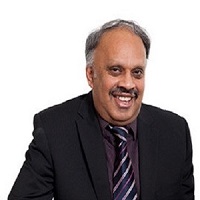
Chair
Umesh Prabhu
Bury NHS Trust, UK
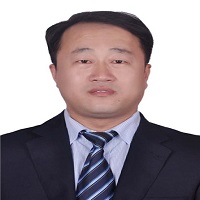
Co-Chair
Rucai Zhan
Shandong First Medical University, China
Title: The Hospital & the elephant: A pre-commissioning story
Biography:
George Schutte, South African by nationality, has 25+ years’ experience in the private hospital space. He started his career in South Africa in the banking industry. George then joined mediclinic Southern Africa as a hospital director for 18 years. Thereafter he served as a consultant for greenfield hospital projects in South Africa and Namibia.This experience equipped him to relocate to the UAE, where he served as CEO of various hospitals for a few of years, before joining VAMED as a project leader for the pre-commissioning hospital operational phase of VAMED’s projects in the Middle East; and more recently also in Thailand, Nepal & China. Currently george resides in Haikou, China.
Abstract:
A new hospital project is always a very challenging journey (to say the least)! Experience has shown that one such critical element for the success of a new hospital project is the pre-commissioning period; and more specifically planning for this phase. Often the construction pre-commissioning planning is dealt with sufficiently. However, planning for the operational pre-commissioning activities is often underestimated and therefor neglected.
The result being: always a frustrated team, usually unnecessary delay in the opening, and, most often, over budget. One criterion for a project to be regarded as successful is the 1,000+ operational actions & activities which need to be sufficiently attended to by the operational team. An example of these activities ranges from documentation and staffing to implementing of committees and governance. “Comprehensive” and “organized” are two key characteristics of these activities. The adventure starts from the original vision of the owner and continuous up until the date-of-first-patient. Not only must we attend to these activities but we must also address them in a synchronized manner, with specific time periods allocated to them. The responsibility to manage this process lies not with the construction project team, but with the operational team. We often feel that this task is boring and tedious. Though, it can be stimulating and fulfilling, íf we keep it simple; use suitable tools; communicate well; involve the whole team; apply sufficient knowledge; (and have FUN).
Title: Seeing cyber security and data protection through the lens of healthcare organizations
Biography:
Ng Paik Bin Christine trained in general nursing at National University) Hospital (1992)and graduated from USQ, Australia with Bachelors of Nursing (2001) and has recently completed Diploma In Law with London School of Business and Finance (2019). She has strong interests and demonstrated key competencies in clinical and biomedical research management. She is a member with International Association of Privacy Professionals.
Abstract:
The connectivity of network systems have benefited both the users and the hackers, but with very different and obvious outcomes. Amidst medical and scientific breakthroughs and continuous efforts to enhance quality, targeted treatment and speed in patient care delivery and recovery assisted by the ever changing technological landscapes, both public and private healthcare organizations have been keeping up with the trends and invested in medical devices that provide seamless connectivity between the patients and the hospitals in terms of data transfer and management. Stolen and sold patient data is disastrous and may be remedied with penalty charges due to breach of privacy and data protection laws. We must not forget that with inter-governmental and regional MOUs, Trade Agreements and Collaborations being forged at global level, transnational data transfers would be inevitable and will certainly pose higher level of security threats. Failure of operational network systems arising from cyber-attacks within a healthcare organization with IoMTs (Internet of Medical Things) installed for the purposes stated above carry far reaching damages leading to delayed treatment, disrupted treatment codes and computations, medicinal dosages or simply a mixed up of a patient’s data with another in the aftermath of an attack, could have devastating if not deadly effects. How do we then enhance patient data protection and strengthen network system security, moving forward? In my opinion, all healthcare organizations might want to revisit traditional way of patient record keeping in paper, compact discs as back up plans and to prevent data theft and work with the manufacturer to segmentalise/decentralise all IoMTs from the main network systems which is the only path through which the cyber hackers conduct criminal acts. If we need the manpower to man all these traditional activities, so be it, as the long term effects are more sustainable.
Title: G.I.T Immunology
Biography:
Abstract:
We will start with a histological reminder of the Gastrointestinal tract (GIT) membrane and its constituents. We will then talk about the GIT as immunologic membrane = GALT. We will review the consequences of so-called diseases of civilization. (intolerances, allergies, MIC). Then we will talk about the immune response, the differentiation of lymphocytes, the secretion of IgA, auto-illunes, the interest of pre-biotics and pro-biotics, the existing relationship between pro-biotics and immunity. It is concluded as the vital importance of the good functioning of the GIT for the well-being of patients.
Title: Simple move for proper diagnosis and healthcare management of patients through integrated multidisciplinary medical approaches
Biography:
Salah Ibrahim Awad has completed bachelor of medical sciences and surgery as well as Diploma of gynaecology & obstetrics from Faculty of Medicine, Cairo University. He holds scientific degrees in Health services & Hospital management, General management sciences, and total quality management from Sadat Academy for Management Science, Cairo, Egypt. He acquired Diploma of TQM in Health services and Diploma of IPC from American university, Cairo, Egypt and Diploma of health administration & medical planning from High Institute of Public Health, Alexandria University, Egypt. He has received master degree in public health policy and management from Emory University, Georgia, Atlanta, USA in 2001. He managed several Governmental hospitals in Egypt and Saudi Arabia and worked as a consultant of TQM, Patient Safety, IPC and environmental safety in many private hospitals. He attended several international symposiums in Egypt, SA, France, Florida and Glasgow. He is the Director of Quality, Patient Safety and Accreditation in Nahdah General Hospital, Taif, K.S.A.
Abstract:
This QIP highlights the importance of paying attention to resolve patients and healthcare givers complaints in hospitals through medical records revisions and adverse events and specific patients' complaints with their related medical records. Gathering patients with specific complaints and professional staffs in meetings with listening to their suggestions help designing new medical approaches to satisfy them is vital. Best solutions should be preceded by conceptual frame works that acquired approval from conjoint team is crucial. Internal auditing statistical data collection, analysis and observation revealed a decline in number of patients seeking for healthcare with increasing complaints and dissatisfaction from HCGs and patients. Occupancy and bed turnover rates are decreased with impaired bed occupancy rate plan of hospital and decreased its occupational revenues. Four months of meetings and conjoint team working formed of HCGs and complaining patients the "SMART "goal was specifically "creating proper diagnosis and healthcare management for patients through multidisciplinary approaches enhancing occupation rate plane to increase revenues, preceded by approved conceptual frameworks covering cares of allergy, women health, chronic diseases, obesity, orthopaedic, rheumatology, infertility and cancer prevention. FMS department overcomes all obstacles concerning patient cycle and passage rotation. The team used "FOCUS-PDCA", practiced retrograde medical records and patient complaints revision and evaluation with data collection and analysis for decision making, through action plan formed of four phases. Transformation from traditional clinics into integral multidisciplinary centers care is recommended with changing designs of both outpatient and ER departments. It regains patients and HCGs satisfaction and more than expectations. Establishment of hospital relative competitive advantages attract patients, increasing bed occupancy and turnover rates with positive effects on operational revenues. Effective marketing for the innovative health care services restores and improves the reputation and image of the hospital in community and makes it the first destination for seeking healthcare.
Title: Obesity, inherited homosexuality and LGBT healthcare
Biography:
Cheryl Wang has earned her MD at Binzhou Medical College, MSc, endocrinology and metabolism, internal medicine in Shanghai Second Medical University (now Shanghai Jiaotong University) and PhD in Science, Endocrinology and metabolism, internal medicine at PLA medical college. She did internal medicine residency and trained as an Endocrinologist in Donying People’s Hospital, China, surgery residency at Mount Sinai and Rutgers in the United States. She was a fellow of obesity at Pennington, of Diabetes at UTHSCSA, of endocrinology at Mayo clinic, of Anesthesia at UB and Columbia Uni, of immunology, surgery, and ob & gyn at Pitts, of hematology and oncology at UM, a CRC at Cetero, a tech at RIKEN, a translator, medical writer, and editor of Medimedia and many companies, an Assistant Professor at UB and Pennington, a Professor and Endocrinologist at affiliated hospital of Taishan Medical College. She also had short training at Harvard medical centers, Cleveland Clinic, Cornell, Banner health, SUNY, UB, etc. She is currently a distinguished professor and endocrinologist at Shengli Oilfield Central Hospital. She attended numerous conferences and is a renowned speaker for many topics. She’s a member of the obesity society, America diabetes association, America association of anesthesiologist, America Surgeons College, a reviewer and invited author for many journals. She is a reviewer and invited author for many journals, with many articles published.
Abstract:
One major pathogenesis of obesity is the unbalanced hormones, too much stress hormone steroid and/or not enough “anti-obese” happy hormones, endorphin, serotonin, dopamine, and oxytocin, too much estrogen and/or too less testosterone. Any sexual orientation is normal. Sexual orientation is X-linked and Y-linked traits, inherited by the next generations. It is like this, female homosexual XAXA, female bisexual XAXa, female straight XaXa, male bisexual XAYA, male homosexual (manly type) XAYa, male homosexual (girlish type) XaYA, male straight XaYa. The presentation and degree of homosexuality vary in many ways, and at different stages of the lifespan, as these hormones and our genetic makeup change. So is a fat deposition. More estrogen and/or less testosterone are associated with fat ass. A fat ass may be an easy way to identify stronger homosexuality. If everybody loves his/her love, it may be better balanced. Yet, the reality is the reality. LGBT healthcare remains far behind. As an unresolved frustration, closeted homosexuality causes a series of health problems, obesity, tobacco/alcohol/substance abuse, and mental/psychiatric disorders. The incautious sexual practice causes sexual transmitted diseases (STDs) like AIDS. Social problems like inequality opportunities among minorities happen often. It brought a huge challenge for management. Better acceptance and recognition from learning in a variety way, information merged into clinical visits through smartphone apps and electronic medical record system (ERMS), barrier protection in sexual practice, positive attitude in daily life, team network of physicians, psychiatrists, psychologists, pharmacists, activists, and communities, with loving hearts. Start local, go global, and don’t ever shut the door.
Title: Burnout syndrome among physicans working in King Fahad Hospital of the Unversity, al-Khobar
Biography:
Abdullah Al Ruqaib serves as senior registrar of family medicine at family and community medicine center in al imam abdurrahman bin Faisal University, Dammam, Saudi Arabia. He held various leadership roles at family and community medicine center. He is trainer of Saudi board program and member of exam committee for Saudi board at family and community medicine center. His interests focuses on safety in health serves centers. He serve as chairman of safety committee, member of strategy planning committee and performance improvement committee at family and community medicine center in al Imam abdurrahman bin Faisal university.
Abstract:
Background: Burnout syndrome is an occupational mental health problem that affects human service professionals, including physicians, due to chronic job stress. It is a syndrome of three dimensions: Emotional Exhaustion (EE), Depersonalization (DP), and reduced Personal Accomplishment (PA), that can occur among individuals who work with people. Physicians are placed under stresses as they are required to provide quality services despite the weakness of infrastructure, shortage of staff, and increased number of patients. In addition, physicians are required to continuously update their knowledge, improve their skills and at the same time take care of themselves and their families. All these stresses may eventually lead physicians to “burnout”. Despite the importance of this occupational mental health problem, there is a dearth of literature about job burnout among physicians in Saudi Arabia.
Objectives: This study was conducted to estimate the prevalence of burnout among physicians working in KFHU and to determine the factors associated with burnout among physicians working in KFHU at eastern province of Saudi Arabia.
Methodology: This was a cross-sectional survey targeting all eligible physicians working in KFHU. A total of 390 physicians were targeted and contacted. A self-administered questionnaire consisting of two sections was used. The first section was constructed by the researcher to include background information on determinant of burnout. The second section was the Maslach Burnout Inventory-Human Services Survey. The prevalence of burnout levels and each dimension were calculated. The SPSS program was used for data entry and analysis.
Results: A total of 265 instruments were analyzed .The response rate for this survey was 67.9%. The prevalence of the different dimensions of burnout are the following: 111 (41.9%) experienced average to high emotional exhaustion, 72 (27.2%) experienced high depersonalization and 102 (38.5%) experienced low personal accomplishment. Of all respondents, 28 (10.6%) had burnout as identified by the combination of high EE, high DP and low PA.
Title: The social health security program
Biography:
Abstract:
Introduction: The Social Health Security Program(SHSP) is a social protection program which aims to access quality health care services and been in implementation from 2016/17 fiscal year in Nepal. SHSP prevent people from catastrophic expenditures for health in an equitable manner, accountability and quality in health care services.
Purposes: This research was intended to identify the barriers to SHI and to know the frequency of people practising the SHI policy.
Methodology: This was a descriptive, cross sectional study, conducted in seven districts hospitals of eastern Nepal among the people selected randomly irrespective of the gender, religion and cast. The study was conducted from December 2017-January 2018 for the data collection and analysis.
Results: Only 23.68% had knowledge about SHSP run by government and 75.26 % unaware of SHSP run by government. Only few, 6.30% had received the SHI issued by government and 93.70 % had not received SHI policies till date. Most of them 14.5% paid themselves for their health scheme, 15.78% knew about the advantage of obtaining SHI while 84.22% people were unaware of various benefits of health insurance policies for the quality health care only 13.15% people had obtained social health security insurance policies from private company and 4.21% people had obtained policies from government.
Conclusion: There were less coverage on this health policy. The movement towards full SHI coverage is an incremental process, with systematic expansion over the transition period. Barriers affecting to meet the universal coverages need to be addressed.
Title: An innovative methodology for improving continuous TQM, patient safety, IPC & environmental safety†education and training in Aster-Sanad hospital, Riyadh, K.S.A
Biography:
Salah Ibrahim Awad has completed bachelor of medical sciences and surgery as well as Diploma of gynaecology & obstetrics from Faculty of Medicine, Cairo University. He holds scientific degrees in Health services & Hospital management, General management sciences, and total quality management from Sadat Academy for Management Science, Cairo, Egypt. He acquired Diploma of TQM in Health services and Diploma of IPC from American university, Cairo, Egypt and Diploma of health administration & medical planning from High Institute of Public Health, Alexandria University, Egypt. He has received master degree in public health policy and management from Emory University, Georgia, Atlanta, USA in 2001. He managed several Governmental hospitals in Egypt and Saudi Arabia and worked as a consultant of TQM, Patient Safety, IPC and environmental safety in many private hospitals. He attended several international symposiums in Egypt, SA, France, Florida and Glasgow. He is the Director of Quality, Patient Safety and Accreditation in Nahdah General Hospital, Taif, K.S.A.
Abstract:
This QIP highlights the importance commitment of "continuous education and training" in hospitals, and raised the knowledge and the scientific level of staff with different categories in the basics and principles of "TQM, Patient safety, IPC and Environmental safety" to "create one team for one goal speaks the same language and thinks the same thinking". Additionally inevitability of involving staff in finding the solution and listening to their opinions to satisfy them. Selecting the best team to study and proposes appropriate solution and implement it through a clear action plan is vital. Internal auditing revealed a false sensation of security and appearance of informal groups. The spirit of quality and patient safety with implementation of policies and procedures become far away from daily workload of hospital categories. Among six months with sharing of 789 out of 814 hospital staff and a team of 15 members chosen by "GRPI" model, the "SMART" goal was specifically "innovating Simple move to improve continuous education and training of quality and patient safety among hospital staff using a new method instead of lectures proved to be not suitable time workload and work shifts as well as to create one team for one goal, the hospital overcome all obstacles and achieved success. The team used "FOCUS-PDCA", practiced team, data collection and analysis quality tools, for decision making, through action plan formed of four phases, putting in mind results of preliminary and final staff questionnaires and exams. Neutralization of informal groups, elimination lack of commitment and resolving the false sensation of security to prepare the hospital for reaccreditation occurred in conjunction with improving staff skill development and morale. Usage the new method in departmental education is recommended. It can help patient education and new employee orientation. Enhancing the internal marketing and celebrating the annual WHO awareness days and sharing in exhibitions get benefits from it.
Title: Women cancer risk and polycystic ovary syndrome
Biography:
Abstract:
Polycystic ovary syndrome (PCOS) is a complex endocrine disorder characterized by oligomenorrhea, hyperandrogenism, and polycystic ovaries shape by ultrasound. It has an estimated prevalence of 4–21% in reproductive aged women depending on the diagnostic criteria and population examine. PCOS is associated with metabolic abnormalities including dyslipidemia, insulin resistance, and type II diabetes and is also one of the most common causes of reduced fertility. The altered metabolic and hormonal environment among women with PCOS may increase their risk of some types of cancer like: Endometrial cancer which explained by the absence of ovulation and producing estrogen, but not progesterone, which causes the endometrium (the lining of the uterus), to grow too much and undergo atypical cell changes. This is a pre-cancerous condition called endometrial hyperplasia. If the thickened endometrium is not treated, over a long period of time it can develop into endometrial cancer, and ovarian cancer: as PCOS increased androgen exposure presence of androgen receptors on normal ovarian cells as well as benign and borderline tumors, and a doubling of androgen levels during pregnancy is associated with a 40–50% increased risk of borderline serous and invasive. Breast cancer: characteristics and consequences of PCOS have been previously associated with both increased and decreased risk of breast cancer. Increased levels of insulin in the blood can increase the risk of formation of breast cancer cells and other kinds of cancers might linked to PCOS medications that may influence cancer risk such as: oral contraceptives, metformin, ovulation-induction therapies.
Title: Workshop on Moving your Teams to WOW!
Biography:
Constance Musallam have a passion for the amazing effects that great leadership can have on and within an organization. As a result, she focus on the top leadership and the middle manager as they both carry a huge impact on those they lead. She focus is to keep the organization financially sound, resilient in health and passionate in leadership.
Abstract:
How do you create a team that not only has a great time working together, but that produces beyond your expectations and creates beyond what you had possibly and originally envisioned? This is definitely the power of a great leader.
Whether your teams are on the front line, in management roles or in the board room, all your teams are vital to the success of your organization. Learn how to make a huge difference in your teams from a shift in morale to a change in their productivity. Experience what it is like when you create a new energy and excitement in your teams. When people feel valued, acknowledged and appreciated, an amazing movement of collaboration and participation begins to happen!
In this workshop, you will try on new skills and will experience the secrets of how it feels to be really seen and heard whether you are in your work environment or your community. It is a powerful skill to hold. Come and explore this and then take your teams to new heights!
Title: The design of a norm for estimating the required nurses for referral hospital inpatient departments using nurse-to-patient ratio approach in Iran
Biography:
Tabatabaee Seyed Saeed is assistant professor in health care administration. He has his expertise in human resources planning for health. he has several articles with respect to estimate human resources and to design a norm for estimating human resources. He has experience with human resource planning in one of biggest university in Iran.
Abstract:
Statement of the Problem: Negligence in the human resource planning leads to many problems, including shortages or the excessive human workforce, the unequal human workforce distribution, and inappropriate use of staff in the organization. To prevent the unequal distribution of healthcare providers, some strategies have already been employed, such as the design and implementation of norm estimation of human resource. The purpose of this study is to develop a norm for estimating the required nurses in referral hospital inpatient wards in Iran using the nurses-to-patient ratio method.
Methodology & Theoretical Orientation: This cross-sectional study was carried out in 53 inpatient departments in 14 referral hospitals affiliated to MUMS in 2017. The specialized nominal group technique was used to determine the required nurse-to-patient ratio for the inpatient departments interview, reviewing documents and staff records were used to identify factors affecting available working time and calculation of nurses’ available working. Finally using nurse to patient ratio and nurse`s available working time was developed a norm a norm for estimating the required nurses for inpatient departments in referral hospitals.
Findings: Eleven factors affecting the nurses’ available time were identified. The hospital inpatient departments were ranked in nine levels according to the nurse-to-patient ratio and in twelve levels by considering the nurses’ available time. In all scenarios, the highest required nurse estimation norm was for the ICU department of burns, and the lowest norm was for the psychiatric departments.
Conclusion: The nurse-to-patient ratio and the available time of nurses are two important components in calculating a norm for estimating the required nurses in different hospital departments. Using a norm for estimating the required nurses can prevent the personalization decisions of managers on distributing nurses, and these norms can also be considered as an efficient strategy to improve the levels of employing nursing staff as well as patient care levels.
Title: STRESS AND TIME MANAGEMENT BEHAVIOUR IN MEDICAL STUDENTS
Biography:
Will update soon.
Abstract:
The aim of conducting the present study was to explore the relationship between medical student’s stress and time management behavior. Furthermore study determined the gender differences in medical student stress and time management behavior. The sample of medical students (N = 200; Males = 100, Females = 100), age range between 19 to 22 years were taken from different medical colleges of Rawalpindi, Islamabad and Abbottabad. The Student Stress Inventory and Time Management Behavior Scale were used. Pearson correlation and t- test were applied to test the hypotheses. The data was analyzed by SPSS version 21. .Results indicated negative correlation between stress and time management in medical students. It was found that those students who had higher level of stress had also poor time management and vice versa. Results showed that female students displayed higher level of stress and highest scores as compared to the male students. The study concludes that stress negatively effects on time management among medical students. Female students exhibit higher level of stress as compared to the male students.
Keynote Session:
Title: Seeing cyber security and data protection through the Lens of Healthcare Organisations
Biography:
Ng Paik Bin was trained in general nursing at National University Hospital (1992) and graduated from USQ, Australia with bachelor’s of nursing (2001) and has recently completed diploma in law with London School of Business and Finance (2019). She has strong interests and demonstrated key competencies in clinical and biomedical research management. She is a member with International Association of Privacy Professionals.
Abstract:
The connectivity of network systems have benefited both the users and the hackers, but with very different and obvious outcomes. Amidst medical and scientific breakthroughs and continuous efforts to enhance quality, targeted treatment and speed in patient care delivery and recovery assisted by the ever changing technological landscapes, both public and private healthcare organisations have been keeping up with the trends and invested in medical devices that provide seamless connectivity between the patients and the hospitals in terms of data transfer and management. Stolen and sold patient data is disastrous and may be remedied with penalty charges due to breach of privacy and data protection laws. We must not forget that with inter-governmental and regional MOUs, trade agreements and collaborations being forged at global level, transnational data transfers would be inevitable and will certainly pose higher level of security threats. Failure of operational network systems arising from cyber attacks within a healthcare organisation with IoMTs (Internet of Medical Things) installed for the purposes stated above carry far reaching damages leading to delayed treatment, disrupted treatment codes and computations, medicinal dosages or simply a mixed up of a patient’s data with another in the aftermath of an attack, could have devastating if not deadly effects. How do we then enhance patient data protection and strengthen network system security, moving forward? In my opinion, all healthcare organisations might want to revisit traditional way of patient record keeping in paper, compact discs as back up plans and to prevent data theft and work with the manufacturer to segmentalise/decentralise all IoMTs from the main network systems which is the only path through which the cyber hackers conduct criminal acts. If we need the manpower to man all these traditional activities, so be it, as the long term effects are more sustainable.
Title: Exploring the ways to reinvent service delivery to create more value for patient, in Healthcare organization, a study of an IVF clinic
Biography:
Manoj Kumar Srivastava has completed his PhD(Hc) at the age of 41 years from Young Scientists University, USA and Executive MBA (HEMP) from IIM Calcutta, Kolkata India. He is the alumni of Manipal University of Higher Education, Bachelor of Clinical Dentistry. He is the consultant in Govt. Health Services UP, INDIA. He is in the Advisory board of NGO Jimmedari Foundation. He is also the director and board member of Metrocare Pathology Lab.
Abstract:
Today’s customers are better informed, better connected and more demanding than ever before. The present study investigated the possibilities of creating a customer-centric service delivery by providing, complimentary services. It identifies the four dimensions the organizations can focus: the structure of the provider-client interaction, the service boundary, the allocation of tasks, and the delivery location. Of late the emphasis is on patient satisfaction in terms of the facilities provided rather than the nature of medical treatment given. This is primarily so for organizations such as this Hospital which aim at providing world-class care and for which `patient centricity’ is the hallmark. In IVF clinic the communication between employees and patients as well as social informal communication between different patients was promoted. Complementary services like, blood tests, USG and certain medications were provided along with the consultancy as well as psychological counseling. The staff was appropriately trained in medical science and technology, advance analytics, machine learning and industry orientation. Hospital and local follow up was provided to the patients. Our research shows there was a positive response from patients which led to more successful cases of infertility treatment, consequently, showing quality improvement & attractive profit growth.
Title: Social health security program(SHSP)
Biography:
Meera Aryal is a local organizer of brain bee in Nepal 2014,2015, 2016, 2017 and local co-organizer for brain awareness program in Nepal, since 2012.
Abstract:
Introduction: The Social Health Security Program(SHSP) is a social protection program which aims to access quality health care services and been in implementation from 2016/17 fiscal year in Nepal. SHSP prevent people from catastrophic expenditures for health in an equitable manner, accountability and quality in health care services.
Purposes: This research was intended to identify the barriers to SHI and to know the frequency of people practising the SHI policy methodology: This was a descriptive, cross sectional study, conducted in seven districts hospitals of eastern Nepal among the people selected randomly irrespective of the gender, religion and cast. The study was conducted from december 2017-January 2018 for the data collection and analysis.
Results: Only 23.68% had knowledge about SHSP run by government and 75.26 % unaware of SHSP run by government. Only few, 6.30% had received the SHI issued by government and 93.70 % had not received SHI policies till date. Most of them 14.5% paid themselves for their health scheme, 15.78% knew about the advantage of obtaining SHI while 84.22% people were unaware of various benefits of health insurance policies for the quality health care only 13.15% people had obtained social health security insurance policies from private company and 4.21% people had obtained policies from government.
Conclusion: There were less coverage on this health policy. The movement towards full SHI coverage is an incremental process, with systematic expansion over the transition period. Barriers affecting to meet the universal coverages need to be addressed.

